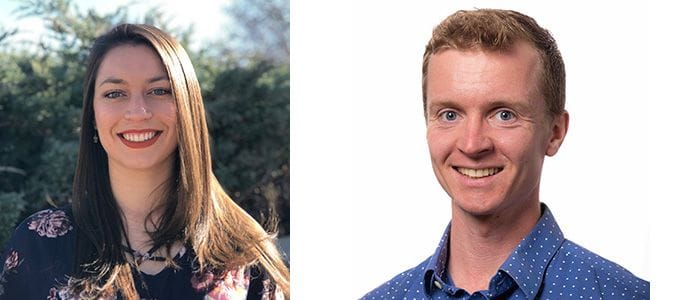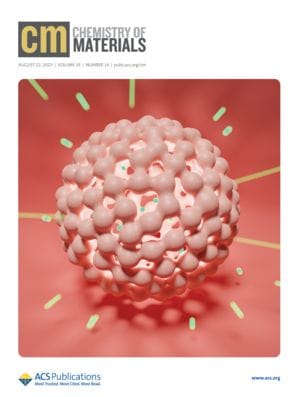This annual award honors the authors of a research article that has made notable impact within materials chemistry and also recognizes the team nature of the winning research. Learn more about the 2025 winners.

Chemistry of Materials and the ACS Division of Inorganic Chemistry are excited to announce "Expanding the Phase Space for Halide-Based Solid Electrolytes: Li–Mg–Zr–Cl Spinels" for the 2025 Chemistry of Materials Lectureship and Best Paper Award, which honors the authors of an article published in 2023 or 2024 that has outstanding influence across materials chemistry and recognizing the team nature of research. This year's winning paper was authored by:
- Christoper L. Rom,* National Renewable Energy Laboratory, United States
- Phillip Yox, Colorado School of Mines, United States
- Abby M. Cardoza, Colorado School of Mines, United States
- Rebecca W. Smaha, National Renewable Energy Laboratory, United States
- Maxwell Q. Phan, National Renewable Energy Laboratory, United States
- Trevor R. Martin, National Renewable Energy Laboratory, United States
- Annalise E. Maughan*, National Renewable Energy Laboratory & Colorado School of Mines, United States
*Corresponding Author
Prof. Sara E. Skrabalak, Editor-in-Chief of Chemistry of Materials, noted that “this outstanding manuscript represents the very best of what Chemistry of Materials publishes—groundbreaking advances in materials design, deep mechanistic insight, and exemplary collaboration and mentorship. By introducing an entirely new family of earth-abundant solid electrolytes and revealing how cation disorder drives fast ion transport, this research not only sets a new standard in the field of solid-state batteries but also highlights the power of cross-institutional collaboration and the intentional mentorship of scientists at every career stage.”
Read the Interview with This Year’s Winners

How did this team come together to collaborate on this research?
This work features extensive collaboration and mentorship between researchers at both Colorado School of Mines and the National Renewable Energy Laboratory (NREL) with expertise spanning solid-state materials chemistry, advanced X-ray scattering, and solid-state electrochemistry. First author Dr. Rom was a postdoc at NREL working with PI Maughan on the discovery of new halide solid-state electrolytes for all-solid-state batteries. He took the initiative to expand the structural and chemical space of the project to the earth-abundant spinels featured in this work. Simultaneously, Dr. Rom was working with staff scientist Dr. Smaha and leveraged the opportunities for synchrotron X-ray scattering from that orthogonal project to enable the findings of this work. As this project progressed, Dr. Rom identified other collaborators with complementary expertise in solid-state electrochemistry (Dr. Martin) to perform additional electrochemical measurements. Underpinning this effort is intentional mentorship. Under the cross-institutional mentorship of PI Maughan, the postdoctoral scholars (Dr. Rom, Dr. Yox) at both Mines and NREL worked together to serve as mentors for a junior graduate student at Mines (Cardoza) and an undergraduate intern at NREL (Phan) as they conducted experimental investigations and analysis. The result was a team built not only on complementary expertise, but also on a culture of mentorship that included and supported junior researchers.
What challenges did you overcome on the way to getting the results you reported in your paper?
One of the key scientific challenges that emerged during this work was a clear discrepancy between the expected crystal structure of the Zr-substituted Li2MgCl4 spinels and the experimental structural data. Through careful structural modeling, we found that this discrepancy arises from redistribution of the cations onto interstitial sites rather than simply an alloying effect. This redistribution – in combination with the introduction of vacancies – modulates lithium-ion transport pathways that enables multiple orders of magnitude increase in ionic conductivity. To address this discrepancy, we used Fourier difference maps to visualize the residual electron density of atoms in the interstitial sites and connected this structure to the multiple orders of magnitude increase in ionic conductivity observed experimentally.
What new research are you doing to build on the findings you described in your paper?
This paper demonstrates that chemical substitutions in the halospinel family creates unique disorder in the local atomic structure, which strongly impact ion transport pathways. Since our discovery of these substituted halospinels, we have expanded our research to new earth-abundant compositions in this structural family. Specifically, we have been focused on characterizing cation disorder and its impact on the atomistic picture of ion transport. Through this effort, we hope to demonstrate new materials and methods that enable a more comprehensive understanding of how chemical composition impacts local atomic arrangements and ion transport pathways.
What advice would you give to research teams who aspire to be where you are now?
The core conclusions underpinning this work arose from the relatively unexpected cation disordering we observe. Taking a step back to re-calibrate our hypotheses and expectations was important for us to recognize that we had found something exciting. We hope other researchers will lean into the experience of having their expectations challenged!

